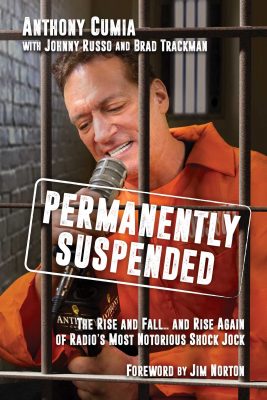A lumbering parable that asks “what if we used humans as livestock?” A provocative question that has never been asked before, except in A Modest Proposal and Soylent Green and Sweeney Todd and The Road and…
Marcos works at a processing plant for “special meat”, ie, people. An infectious plague has rendered all animal meat poisonous, and the government (through euphemism and bureaucracy) has legalized cannibalism. Most of his book involves Marcos going about his daily life while feeling sad.
The book never gets out of its own way. It’s so certain that it has a great premise that it never moves past that premise and does anything with it. Marcos is a flat and uninvolving character. The endless quotidian detail of his job just provokes a response of “Yeah, eating humans is horrible and awful. So what?”
I suppose the book is intended to shock us awake about the horrors of factory farming, or whatever. It’s a thought experiment often advanced by environmental ethicists. “How can you be comfortable eating a cow but not a person?”
For the same reason I’m comfortable driving over asphalt but not a person. Asphalt isn’t people, and neither are cows. The parable falls apart for me because it comments on a real life issue in a way that distorts the issue beyond recognition.
Moral philosopher John Rawls proposed that ethical decisions be made behind a “veil of ignorance”. Imagine you’re a baby that’s about to be born. You don’t know anything about who you’ll be, or your circumstances, or anything. You might be a king or a pauper. In light of this, what world would you like to be born into?
Specifically, would you want to be born into Bazterrica’s world? I wouldn’t: I might be special meat and suffer any number of horrible experiences. But suppose Rawl’s veil of ignorance crossed the species barrier. You might be born as a human, or born as a cow. Would you like to exist in that world (ours)?
The thing is, I can’t imagine life as a cow. Do they experience pain? Certainly. Is it the same pain as ours? I don’t know. Are they conscious? Probably. Is it a sort of consciousness where they can anticipate the future, feel regret, imagine different circumstances, and so on? I don’t believe so. These are questions Tender Is The Flesh doesn’t get around to answering. Most people object to factory farmed livestock because the animal suffers in the process, but raising humans as livestock would (to my view) be morally wrong even if the human didn’t suffer, because you’re infringing on the will of a highly conscious being. You can’t swap animals with humans in this scenario, the whole equation changes.
Bazterrica’s world needed a stronger sense of realism. Instead, it comes off as fantasy, totally disconnected from our world, less A Modest Proposal than Gulliver’s Travels. The scenario makes little sense. Nobody would raise humans as livestock even if it were legal to do so. Humans are strong, intelligent, and capable of communication and using tools, all of which would make them extremely dangerous to their captors. Worse, they take fifteen to twenty years to reach maturity, during which time they must be fed millions of calories. How could that be economically viable? I think if meat became inedible we’d start meeting our protein needs with things like soy instead.
The inciting incident is that Marcos receives a female human as a gift-slash-bribe. He’s supposed to eat her. He develops feelings for her instead, and eventually impregnates her, (ironically) a major crime. I was reminded of something I saw on Reddit. If Elmer Fudd was trying to rape Bugs Bunny, it would be horrifying. Luckily, all he’s trying to do is kill him.
This is another big moral issue: pets. We have furry animals in our homes that we consider part of our families. But on a certain level, this is more manipulation. They’re there to fill selfish emotional needs. Thousands of dogs get abandoned once they’re no longer cute puppies, and even well-cared for animals are living a life they weren’t designed for. There’s an argument that keeping a big dog in a suburban apartment is as wrong as raising a cow in a feedlot. This was the stronger side of the book for me.
No Comments »
They used to make these little boxes where you’d jiggle a dial and someone’s voice would come out. The voices belonged to radio jocks, who were in constant competition for listeners. Some had smooth voices, some played the right music, others had the “local perspective”. Then, in the late 80s, they started saying naughty words.
“Shock jock” radio hit its peak in the 1990s. The usual format (used by scores of stations) was two guys with a line in outrage, dodging fines and performing increasingly outrageous stunts. It was a simple, effective storyline with ready-made heroes and villains: the plucky, scrappy radio DJs (yay!) versus the big bad “management” entity that was always trying to ruin the fun (boo!). The FTC enforced strict content guidelines for public airwaves, and it was a game to see how far jocks could take edgy content. You almost had to keep tuning in: it might be the last day your favorite show was on the air.
Opie & Anthony were a shock jock duo of exceptional quality. They achieved success (in between repeated firings and cancellations) as a kind of everyman Howard Stern show, doing a mix of stunts and pranks and gross-out bits. They weren’t afraid to lampoon the radio business itself – their “Jocktober” bits were quite revealing as to how fake and constructed almost every part of a commercial talk radio show is. In their later years they transitioned to being a proto-podcast, focusing almost entirely on interviews and nonscripted content.
This new focus on personalities made something clear: one of the hosts was way more talented than the other.
Gregg “Opie” Hughes had gone to broadcasting school and knew how to push buttons and go to segues. But Anthony Cumia was a dementedly funny, with thousands of fascinating stories, a skill at impressions, and an ability to “rap” with almost anybody. He was self-destructive (a race-rant got him sacked from his own show), but was ridiculously skilled at what he did. The crosses in his backyard weren’t the only thing on fire.
Or as Jim Norton says:
“Regardless of the discussion, the context, the topic, Ant has the ability to reach in with perfect timing and pull out something funny. He is by far the most talented radio performer I’ve ever known, and he’s as fast as any comedian who has ever lived. I’m a great get if you nee someone to describe an old lady falling down the steps or a blumpkin joke, but Anthony can be captivatingly funny describing air-conditioning duct installation. He can walk you through every aspect of the most monotonous activities, paint a perfectly clear picture, hilariously veer left and right, and will not once stray into the territory of boring.”
Permanently Suspended: The Rise and Fall… and Rise Again of Radio’s Most Notorious Shock Jock is Anthony’s biography. Disappointingly, it has coauthors. Indeed, large sections read like one of Anthony’s broadcasts transcribed. It basically covers his life from childhood to 2017 or so, when he was hosting a show with Artie Lange (which he no longer does). I’m not sure who it’s for. Non-O&A fans won’t care. O&A fans will have heard all of these stories told before on the radio, many times. But it’s funny and fast-moving, and there are lots of photos.
I found the hardscrabble early O&A years particularly interesting. Again, most of it you’ve heard, though it’s good to know that Ant’s hatred for WAAF program director Dave Dickless continues unabated.
This Dave Douglas guy was always just a bug up our asses. He once said, “You know what you should do? Take a picture of who you envision as an audience member. Who do you picture? Find a magazine with a picture of someone who resembles this person you have in mind and put that picture in front of you on your mixing board. So when you’re talking into the mic, you get an image of who you’re talking to.” The fucking guy actually said this! Well, we nodded and smiled, and I couldn’t look at Opie and he couldn’t look at me at this point. We were just laughing our fucking asses off. […] Then we found a Swank magazine and cut out pictures of a woman squatting and posted the pictures. “Here’s how we picture our audience: a bunch of filthy cunts.”
The book captures Anthony’s head at a particular moment, when he’s immersed in his current gig, and that weights the book in a way I didn’t care for. Reading about a millionaire building a studio in his Long Island mansion is boring. And there’s obviously a lot of juicy drama that he leaves out – stuff like his fling with transsexual Sue Lightning that you’d only know about from the now-banned subreddit.
Anthony has zero business skills (as he admits himself), and his career has been spent waiting for lucky breaks. But in the long run, nobody in radio was that lucky. In 2000, satellite radio emerged as a commercial force. Because it didn’t use the FTC’s airwaves, it could be completely uncensored. Everyone thought that satellite would be God’s gift to the shock jocks: instead, within a few years the format had been killed forever.
Why? It turns out that shoving a wiffle bat up a female intern’s fundamentals was never that funny (particularly when you couldn’t see it). It was interesting because of the shock: you weren’t allowed to do stuff like that on the air! Once you were, the shock disappeared, and the whole enterprise stood revealed as boring and hack.
The book is bittersweet because it records an era that will never come again. The mid 90s exist in a cultural gray zone of sorts: too late to be lionized like the 60s, too early to be effectively archived by the internet. Shock jockery is the kind of thing that was once everywhere, but now mainly exists in memory. Anthony Cumia is a graying part of a once-great legacy.
No Comments »
‘”And here you will stay, Gandalf the Grey, and rest from journeys. For I am Saruman the Wise, Saruman Ring-maker, Saruman of Many Colours!”
‘I looked then and saw that his robes, which had seemed white, were not so, but were woven of all colours. and if he moved they shimmered and changed hue so that the eye was bewildered.
‘”I liked white better,” I said.
‘”White!” he sneered. “It serves as a beginning. White cloth may be dyed. The white page can be overwritten; and the white light can be broken.”
‘”In which case it is no longer white,” said I. “And he that breaks a thing to find out what it is has left the path of wisdom.”
– JRR Tolkien, Lord of the Rings: The Fellowship of the Ring – Book II Chapter 2, The Council of Elrond
I, like many people, shudder over Thomas Kinkade paintings…but why is this? What, exactly, is bad about them?
I read a Reddit discussion on the topic. Most of the respondents answerers couldn’t answer except through “opium contains a dormitive principle” tautologies.
It strikes me as kitschy, and kitsch is not art.
it is art for the lowest common denominator.
His marketing strategies are targeted at lower class Americans. His works are not owned by the upper classes, which is notable for any product but especially art which always purports to be noble (and Kinkade more than most artists wants to be perceived as high-minded).
it’s not Art; on the spectrum of art, it falls squarely in the “decoration” camp. There’s no deeper meaning, no depth, it’s simply trying to be a pretty picture
It’s considered bad taste because it marks you as someone who isn’t familiar with much art, or hasn’t thought much about it. If you’ve seen a lot of art, spent time paying attention to it, or compared pieces, styles and movements, you will probably find Kinkade very dull.
“he sucks, he’s bad, if you like him you’re an Ump-Tray Upporter-Say, etc”
Perhaps Kinkade’s work is so obviously bad that it’s not even worth analysing. It’d be like trying to quantify why a cockroach is so repulsive. Art is about instinctive, unlearned responses, after all. There’s little need to “analyze” art when the response is the aesthetic equivalent of a white phosphorous explosion.
But refusing to analyze things can lead to blind spots – it’s still interesting to consider what makes a cockroach more disgusting than, say, a woodlouse or a mouth. And it’s interesting to consider why Kinkade’s art is uniquely bad, when other similar art isn’t.
With respect to Gandalf, it’s time to break apart the Painter of Light.
1) Kinkade’s art communicates nothing
Art is defined as an artist’s attempt to create meaning in the mind of the audience. What’s meant by “artist” (and “meaning” and “audience”) is up for grabs. But there always has to be some element of communication. Art is the bridge for the artist’s ideas.
This is what separates artwork from wallpaper. It’s also why I have reservations calling the work of Dalle-2 “art”, even though it might look like it.
The triumh of the modernist movement was to understand that art is also an interpretive process. A work of art can be understood differently by different people, and the meaning might change depending (: the meaning can va).
But by the same token, it’s not totally up for grabs. But there has to be something. Art exists to say things. Just as language exists to say things.
Kinkade’s paintings say “goo goo ga ga”.

They’re bland collisions of soggy, overly sentimental imagery and branded Disney characters. The aesthetic impact they have (for me, sickened), seems almost accidental: Kinkade seems to have painted each one with dispassion bordering on contempt, working down a checklist of “nostalgic” signifiers.
2) He doesn’t understand that less is more
Do you like beer? Enjoy a cold brew over dinner, perhaps?
Well, Thomas Kinkade just threw you into an enormous 5000 gallon vat of beer. Salud!
Any chance his paintings have of creating a nice mood is spoiled by the fact that he does it to excess. When looking at Kinkade’s paintings, you get the feeling that you’re looking at a fighting game where the “Cute” and “Whimsy” sliders are stuck on maximum. This is the essence of kitsch. Sometimes this creates a ludicrous effect: with elements of the paintings not even seeming to exist in the same world. For example:

It’s the middle of the day. But every window is aglow with firelight, as would only happen at night. And who would build a cottage on low ground right next to a stream? Streams flood. After a week of heavy rain, the water would be up to the wainscoting. These are little things that shatter the impression of a unified world.
3) Almost all interesting art grapples with ugliness in some way
I don’t mean it has to be about or predominently feature ugliness. But Kinkade’s paintings deliberately do not feature it at all. As per his instructions:
The concept of beauty. I get rid of the “ugly parts” in my paintings. It would be nice to utilize this concept as much as possible. Favor shots that feature older buildings, ramshackle, careworn structures and vehicles, and a general sense of homespun simplicity and reliance on beautiful settings.
The image above shows off this philosophy in action.
He wants firelit windows…but doesn’t want a night scene. Because night is scary and forbidding. Very few Kinkade paintings depict night, and the ones that do normally turn it into a ghoulish purple-pink twilight that resembles a scene from an alien planet.
Here’s another one:

Another Kinkade signature move is branded Disney characters. Here he tries to capture the entire story of Bambi on one frame, and produces an overstuffed exercise in claustrophobia. Aren’t there sad and scary parts in Bambi’s tale? Not according to Kinkade.
There’s an essential phonyness to Kinkade’s work that shines through even when he adapts Disney. His work is too idealized to be realistic, yet too enslaved to familiarity and folksiness to succeed as a work of imagination or fantasy.
3) He was not what he appeared to be.
Kinkade was a self-promoter and an entrepeneur: being a painter was incidental.
Yes, he worked hard on his paintings. Not because they had value in themselves (even as investment assets, many people who were suckered into buying them found themselves holding unsellable and unvaluable paintings), but because they were his brand, his business.
“Putting Thomas Kinkade in an art-historical context is like trying to put Jack Chick in the context of the illustrated comic strip,” – Peter Frank. A striking comparison.
Technically, Jack Chick is among the most successful comics creator of the 21st century. But it doesn’t seem right to describe him as a comics artist. He was a religious evangelist: the comics were a means to an end. Likewise, Kinkade’s pose as a “painter of light” is a cheap mask over the kind of hyper-aggressive Type-A personality cluster you see in Wolf of Wall Street and Glengarry Glen Ross. The type and tries to “close” three grannies before lunchtime.
His skilled technique makes it worse, in a way. If his art was dashed-off rubbish by an amateur, its lack of quality would be understandable. Instead, Kinkade worked hard to make his paintings suck.
His business-focused approach was unusual among artists. First, he identified a need in the market. Cosy, nostalgic imagery. Then he “iterated over a cycle”, in business speak, eventually achieving product market fit. He made himself tens of millions of dollars selling fairly worthless art.
Artists do not normally trademark names for themselves. Nor do they mass-produce their own work. Kinkade was incredibly succcessful, in the sense of making money. He was also so bad that his paintings almost have secret lives as depictions of folkcore dystopias. (This page describes Kinkade as the “Painter of Shite”, which is so banal and obvious that it might be the Thomas Kinkade of insults.)
1 Comment »






